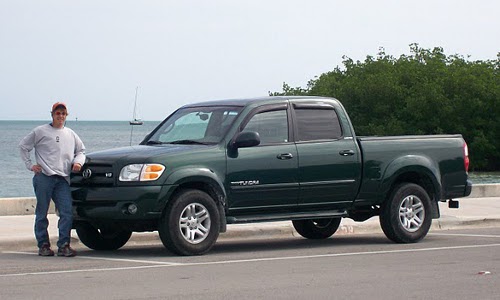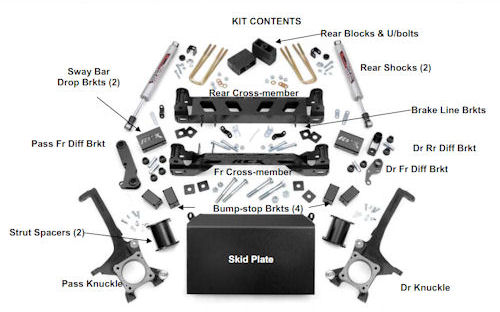 Archive for May, 2011
Archive for May, 2011
Fuel Doctor Review – Introduction and Test Procedure
>> Be sure to check our official Fuel Doctor review post to see if it really works!
Guest Post By Toby of Tundra Fuel Economy blog.
February 1, 2011 – From a very early age I can remember thinking and wondering about fuel economy. While yet still quite young I came to the conclusion that absent drastic change in fuel economy it would be rather likely that we would run out of petroleum in our lifetime. I spend a lot of time thinking about how to improve fuel economy and have tested many of my personal theories and inventions. I have also tested devices or products available for sale to the general public. Some of these devices have worked while others have only served to lighten my wallet. I take nothing for granted and have found in a few instances that the general consensus is off base or completely wrong. I am a hands-on kind of guy and most of what I write about is based on my personal observations and testing.

Toby the Fuel Doctor tester next to his 2004 Tundra
When Jason contacted me asking if I would be interested in testing the Fuel Doctor for TundraHeadquarters.com and writing a review of the device, I was eager to get started. I must admit to a fair degree of skepticism after reading both how this device is purported operate and in the gains claimed. I know from personal experience that a 10% gain in fuel economy is an impressive improvement. Even so, I will test the Fuel Doctor in as scientific a manner as possible using a Scanguage II and the old reliable pen, paper, and calculator.
Tundra Traction Control Comparison Videos – A Tale of Two Agendas
They say a picture is worth a thousand words, and in the world of viral video, a YouTube link can spew forth opinions at a rate many times that of a single photograph. There’s no denying the power of a well put together video, especially in the automotive world where many drivers adopt the attitude of “seeing is believing” when it comes to performance.
Unfortunately, just because a video has been produced in a professional and well-executed manner, there is no guarantee that the information presented is impartial. Promotional videos released via thinly-disguised publicity campaigns which adopt an air of third-party legitimacy are inherently deceptive. This is just as true in “political action committee” TV ads as it is in the hotly-contested full-size pickup truck market, where so much emphasis is put on comparing and contrasting the capabilities of the offerings from Ford, Chevrolet, Dodge and Toyota.
What you’re about to see is two different videos, each of which claims to do the exact same test…but with very different results. [Spoiler alert: GM lied about the way their trucks compare to the Tundra.]
F-150 Reputation Resistant to Rust, Fire, and More. Why?
In the last 5 years, the Toyota Tundra has had some serious quality issues:
- Frame rust problems
- Weak tailgates
- Unintended acceleration recalls
While this list is definitely bad, can anyone honestly argue that it’s worse than the F150’s list of problems?
- 1.5 million trucks recalled for spontaneously exploding airbags
- Faulty cruise control modules that have been linked to dozens of vehicle fires
- 2+ million trucks likely to be recalled for rusting fuel tank straps
Granted, Ford has yet to recall the F-150 for rusting fuel tank straps, but all signs point to an imminent recall.
The question is: In light of all of this info, how can anyone honestly argue that Tundra’s reputation for quality or safety is any worse than the best-selling truck in the industry, the Ford F-150?
Active Aerodynamics and Pickup Truck Fuel Economy
Aerodynamics plays more of a role in automobile fuel efficiency than many people realize. In fact, when looking at vehicles as large as trucks even small tweaks to a body shape’s aero profile can pay dividends in terms of reducing gas consumption at highway speeds.
What Is Active Aero?
In the pursuit of better fuel economy, many automakers are turning to the field of active aerodynamics. Performance enthusiasts are most likely familiar with active aero applications in the racing and high-end sports car world, where spoilers deploy at certain speeds to help achieve greater straight-line stability, or air brakes pop up in order to haul racers down from triple digit speeds as quickly as possible. When it comes to fuel economy, active aerodynamics plays a more subtle, but no less important role in changing the flow of air around an automobile in order to maximize its slipperiness and reduce the amount of energy needed to keep it moving forward at a specific speed.
Rough Country 4.5-inch Lift Kit for the Toyota Tundra
Some Toyota Tundra owners are not satisfied with a 2-inch or 3-inch lift and instead seek out suspension kits that can provide them with greater ground clearance – kits like the Rough Country 4.5-inch suspension lift. The Rough Country 4.5-inch kit is a very complete offering that comes with everything you will need to add a substantial amount of ride height to your Tundra.

Contents of the Rough Country kit.
What’s In The Box
The Rough Country kit arrives in four boxes containing

